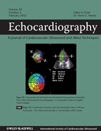Pulmonary Function and Left Ventricular Mass in African Americans: The Atherosclerosis Risk in Communities (ARIC) Study
Conflict of Interest: All authors have no conflicts of interest to disclose.
Disclosure: This research was performed at the National Institute for Occupational Safety and Health. The findings and conclusions in this article are those of the authors and do not necessarily represent the views of the National Institute for Occupational Safety and Health.
The first author (Dr. Charles), Dr. Burchfiel, Dr. Andrew, and Mr. Gu are employed by the federal government and are not allowed to transfer copyright.
Abstract
Purpose: Impaired pulmonary function has been associated with increased cardiovascular disease incidence and mortality. The objective of this study was to investigate associations between pulmonary function and left ventricular (LV) mass. Methods: Participants were African American women (n = 1,069) and men (n = 555) aged 49–73 years, from the Atherosclerosis Risk in Communities study. Mean pulmonary function values at the first (1987–1989) and second (1990–1992) examinations were used. Echocardiograms were performed at the third and early in the fourth examinations (1993–1996). Analysis of covariance and linear regression were used to assess associations. Results: Mean levels of LV mass decreased with increasing quintiles of forced expiratory volume in one second (FEV1) among female never smokers (P = 0.039). Forced vital capacity (FVC) showed stronger associations than FEV1 with LV mass. Among men, LV mass was positively associated with FEV1 among current and never smokers, and with FVC among never smokers. Additional analyses among never smokers revealed significant inverse associations between LV mass and FVC among women with waist-to-hip ratios of >0.85 and those with no history of diabetes. In contrast, significant positive associations between LV mass and FVC were seen among male never smokers with body mass index (BMI) of ≤24.9 kg/m2, waist-to-hip ratios of ≤0.95, no history of hypertension or diabetes, and ≤60 years old. BMI and waist-to-hip ratio significantly modified associations among men. Conclusions: Among never smokers, LV mass and pulmonary function were inversely associated among women and positively associated among men. Further studies are warranted. (Echocardiography 2012;29:131-139)




